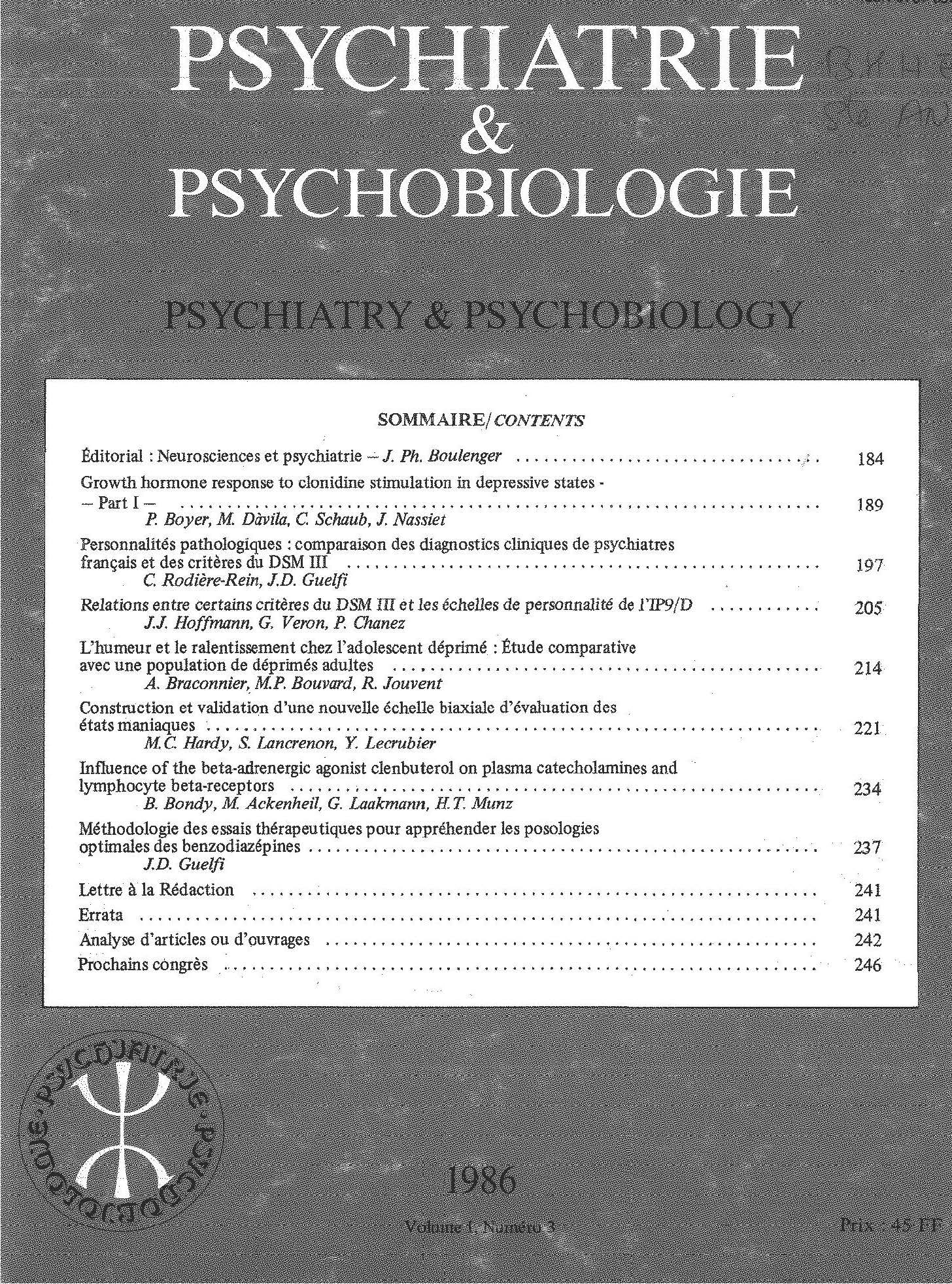Article contents
Les facteurs évolutifs des crises d’angoisse-panique : résultats préliminaires d’une enquête rétrospective chez 35 patients
Published online by Cambridge University Press: 28 April 2020
Résumé
Cette étude rétrospective a été entreprise chez 35 patients ambulatoires répondant aux diagnostics DSM III de troubles panique ou d’agoraphobie avec attaques de panique (AP), dans le but de mettre en évidence la chronologie d’apparition de différents symptômes d’anxiété chez ce type de patients. Dans plus de 90% des cas, la survenue d’AP précède ou inaugure l'apparition des symptômes permettant de porter les diagnostics mentionnés précédemment; comme cela est rapporté dans la littérature, ces AP paraissent survenir le plus souvent au décours d’une période de difficultés personnelles de natures diverses considérées comme «stressantes» par les patients con-cernés. D'autre part, chez 30% des patients répondant au diagnostic d’agoraphobie avec AP, on relève l'existence d’antécédents phobiques préexistant à l'apparition des premières crises d’angoisse-panique; l'existence de tels antécédents n'est relevée que chez 8% des patients répondant au diagnostic de troubles panique. L'hypothèse selon laquelle une prédisposition phobique favoriserait le développement de l'agoraphobie chez des patients présentant des AP répétées mériterait d’être confirmée par des enquêtes rétrospectives plus systématiques sur des échantillons cliniques plus larges.
Summary
This retrospective study was undertaken in 35 ambulatory patients who corresponded to the DSM III diagnosis for panic disorder or agoraphobia with panic attacks. Its object was to demonstrate the chronological order in the appearance of different symptoms of anxiety in this type of patient. In over 90% of the cases, the occurrence of panic attacks preceded or caused the appearance of symptoms which gave rise to the aforementioned diagnoses; as reported in the literature, these panic attacks seemed to occur most frequently throughout an episode of personal problems of various kinds considered to be «stressful» by the patients concerned. Furthermore, it was found that in 30% of the patients corresponding to the diagnosis of agoraphobia with panic attacks, phobic antecedents existed before the appearance of the first panic attacks; however, the existence of such antecedents was found only in 8% of the patients corresponding to the panic disorder diagnosis (Table II). The hypothesis whereby a phobic predisposition furthers the development of agoraphobia in patients with repeated panic attacks is worthwhile being confirmed through more systematic retrospective surveys on wider clinical examples.
Keywords
- Type
- Article original
- Information
- Copyright
- Copyright © European Psychiatric Association 1988
References
Références
- 1
- Cited by



Comments
No Comments have been published for this article.